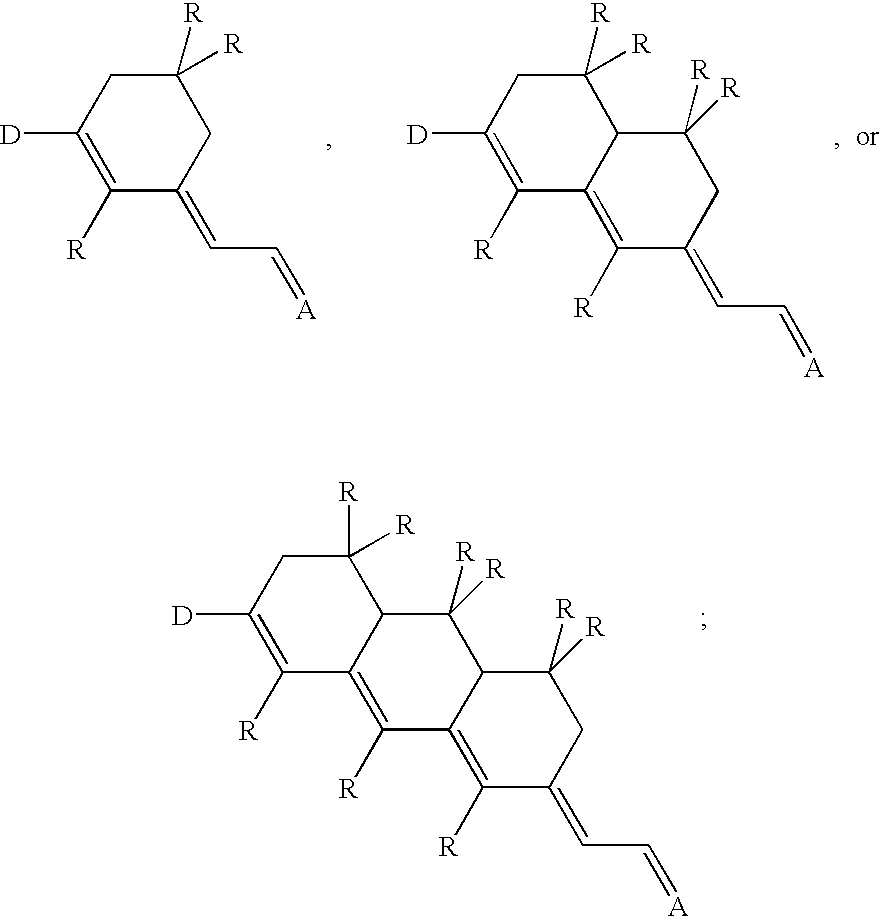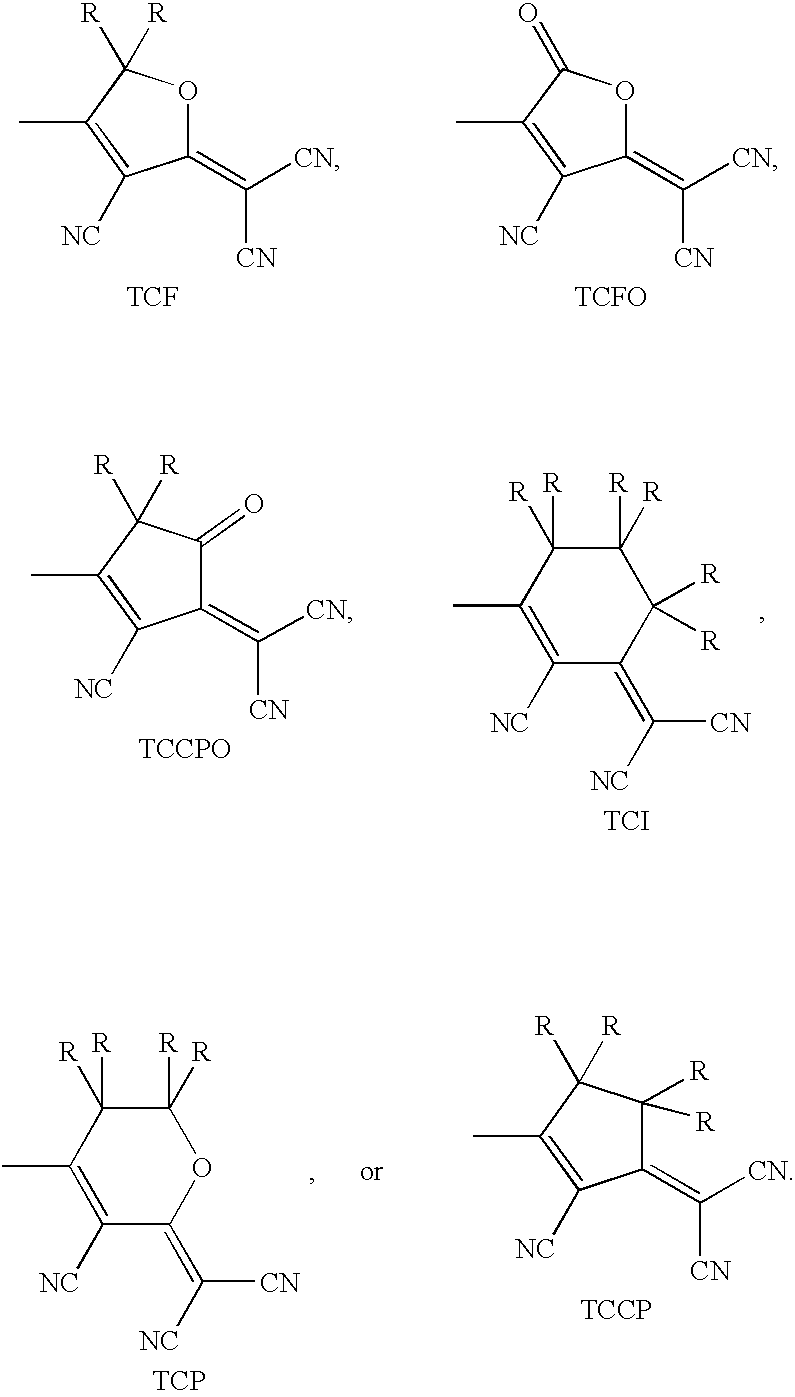Sterically stabilized second-order nonlinear optical chromophores with improved stability and devices incorporating the same
a chromophores and stability technology, applied in the field of nonlinear optical chromophores, can solve the problems of randomization of chromophore noncentrosymmetric alignment and low chemical stability, and achieve the effects of improving the chemical and alignment stability of polyene-bridged chromophores, reducing the amount of (or completely eliminating), and reducing the interaction between chromophore dipoles
- Summary
- Abstract
- Description
- Claims
- Application Information
AI Technical Summary
Benefits of technology
Problems solved by technology
Method used
Image
Examples
Embodiment Construction
The following is a detailed description of the best presently known mode of carrying out the invention. This description is not to be taken in a limiting sense, but is made merely for the purpose of illustrating the general principles of the invention.
Referring to FIG. 1, three chromophore structures (Ia, Ib, and Ic) according to the present invention are illustrated. Each chromophore includes an electron donor group ("D"), an electron acceptor group ("A") and a bridge structure therebetween. According to the present invention, these chromophores include an electron donor group which is directly connected to a (fused) ring-locked .pi.-conjugate bridge; the chromophore structures have no free double bond between the donor D the (fused) ring bridge. In this class, there is a conjugated diene between the (fused) ring bridge and the acceptor. Various electron donors can be used, including, but not limited to, aminobenzenes, aminothiophenes, and ketene aminals (shown in FIG. 6). The elec...
PUM
| Property | Measurement | Unit |
|---|---|---|
| temperature | aaaaa | aaaaa |
| temperature | aaaaa | aaaaa |
| dipole moments | aaaaa | aaaaa |
Abstract
Description
Claims
Application Information
 Login to View More
Login to View More - R&D
- Intellectual Property
- Life Sciences
- Materials
- Tech Scout
- Unparalleled Data Quality
- Higher Quality Content
- 60% Fewer Hallucinations
Browse by: Latest US Patents, China's latest patents, Technical Efficacy Thesaurus, Application Domain, Technology Topic, Popular Technical Reports.
© 2025 PatSnap. All rights reserved.Legal|Privacy policy|Modern Slavery Act Transparency Statement|Sitemap|About US| Contact US: help@patsnap.com



